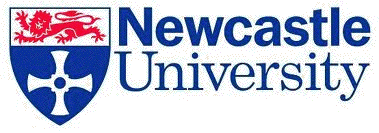Past Meetings
Second Meeting
Tyne-Forth Forum 2: The Prehistory of the Cheviot Hills
Friday, 27th November 2009; Small Clore Room, The Great North Museum, Newcastle
The second meeting of the Forum focussed upon the Cheviot Hills, a massif which straddles the Border and has created a variety of settlement and subsistence opportunities throughout Prehistory. This meeting aimed to explore the nature of Prehistory throughout these hills, discussing those features of the archaeological record where there are convergences, but also considering areas of divergence. Is the Border watershed illusory and a relatively modern construct, or did it really form a physical barrier to cultural developments during the prehistoric period leading to differences on both sides of the Border?
Papers addressed the nature of the prehistoric record in the Cheviots, and especially studies which consider cross-Border issues and explore whether the social foundations - the settlement record, land-use patterns and material culture – demonstrates cultural patterning which could have led to constructs such as the Votadini and Selgovae in later prehistory.
The environmental context of the settlement record was a key theme. Big issues such as the effects of the Mesolithic Tsunami along the North Sea coastal regions and beyond, or evidence for localised events that led to gravel aggradations on valley floors as at Powburn, can be explored to inform our understanding of how climate may have periodically impacted upon prehistoric communities – but conversely also review how communities may have directly or indirectly shaped their worlds through land-use.
10:30 Coffee
Chairperson: Rob Young
11:00 Alison Sheridan: The occurrence of axes in the Cheviots.
11:30 Ben Johnson: Bronze Age settlement.
This paper will explore the nature of Bronze Age settlement in the Cheviot region with an emphasis on the newly discovered late Bronze Age lowland settlement(s) in the Milfield Basin.
12:00 Al Oswald: Cheviot ‘hillforts’: Their development and landscape contexts
12:30 Chris Jones: The National Park Lordenshaws Project
1:00-2:30 Lunch
Chairperson: Clive Waddington
2:30 Dave Cowley: Later Prehistoric boundary systems in the north-west Cheviots.
This paper will explore the disposition and function of the later prehistoric boundary systems in the north-west Cheviots, based on recent field survey. The local study will be placed in a wider context to highlight regional variation in form and function.
3:00 Richard Tipping: The Longue Duree in the Cheviot Hills: Fine Spatial Resolution Palaeoecological Reconstructions of Settlement and Land-use in Later Prehistory.
Pollen data analysed in the late 1980s for the Bowmont Valley, in the northern Cheviot Hills, are still highly pertinent to current palaeoecological concerns because the analyses are from a network of seven pollen sites, each independently dated and each reflecting small parts of the landscape. Most of these data, in addition, have yet to be published! They can be used to identify different settlement patterns and human activities in several localities, creating a kind of palaeogeography for this one river catchment. This palaeogeography will be reconstructed for later prehistory, from the beginning of the Neolithic period until the Roman ‘interlude’. Palaeoecological reconstructions often give a markedly different sense of occupation to archaeological data, and this will be drawn out. Together with evidence also for periods of accelerated fluvial activity in the Cheviot Hills, the data-set can describe the pace of environmental change and the timing of major landscape transformations that are independent of archaeological analyses.
3:30 Dave Passmore
4:00 Discussion
5:00 Close



